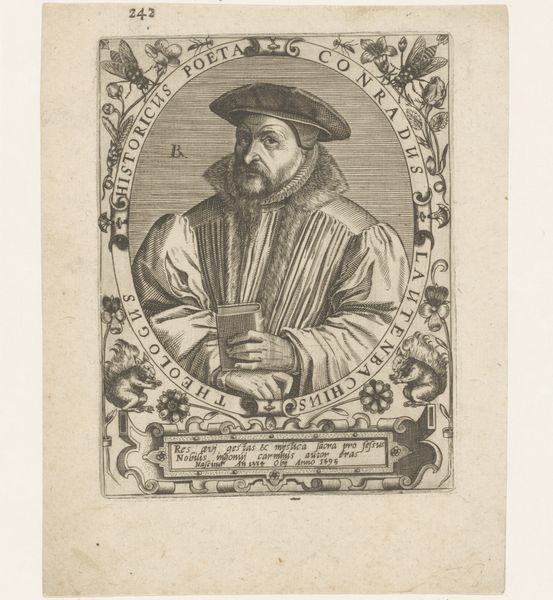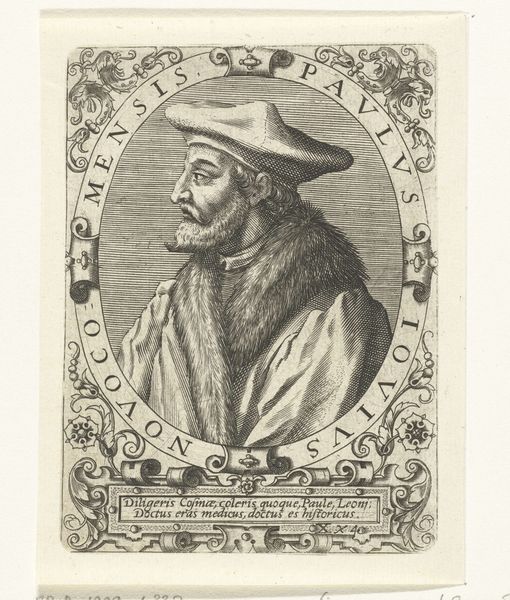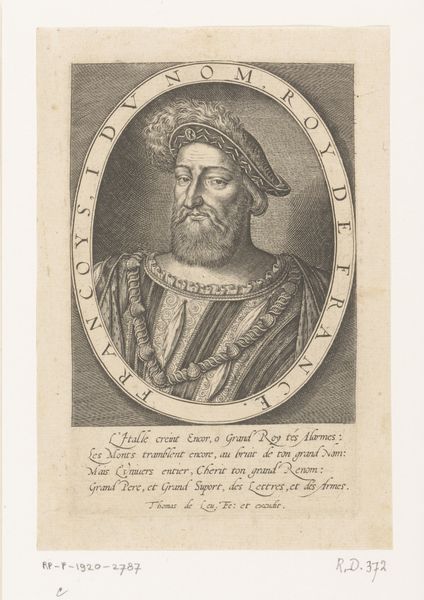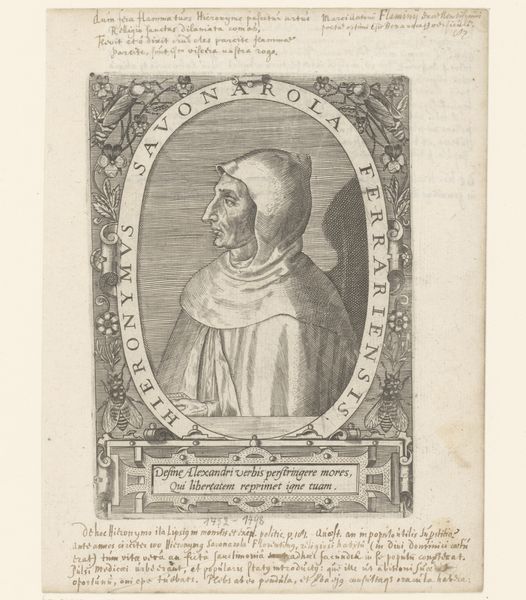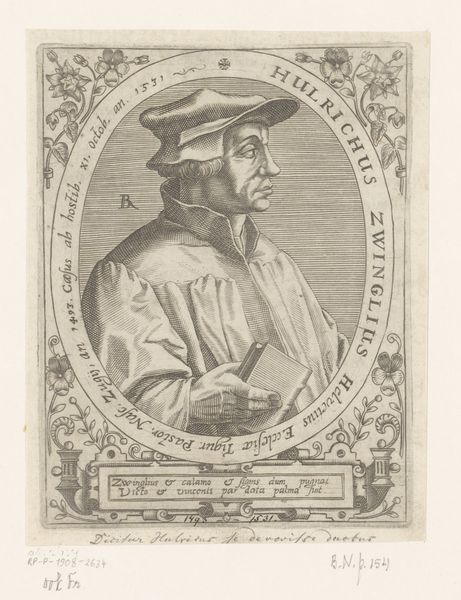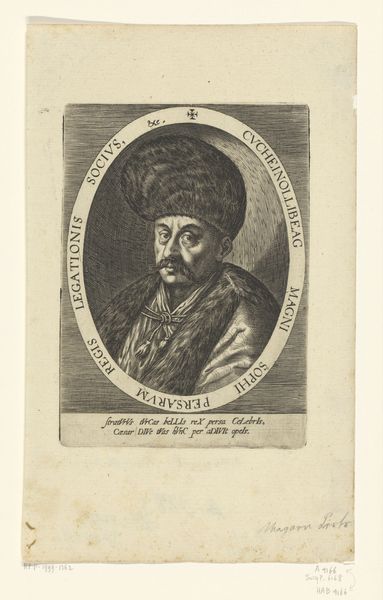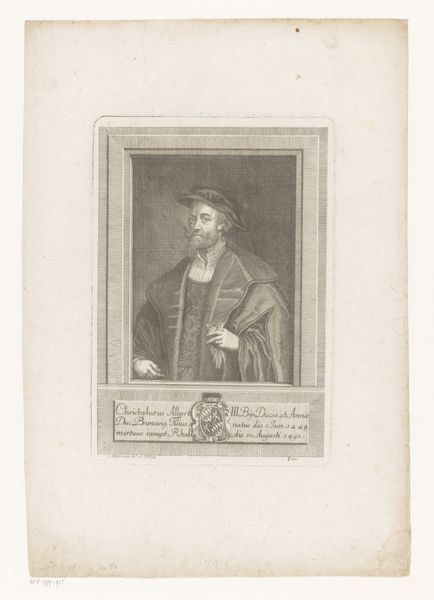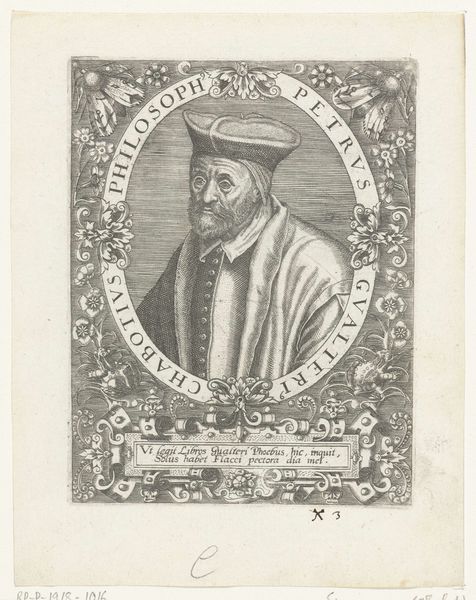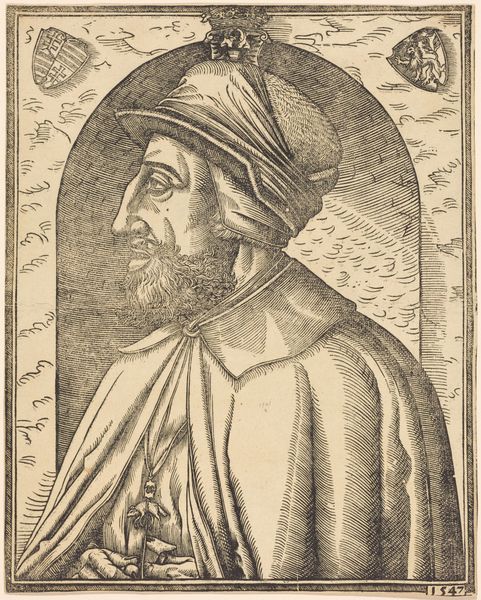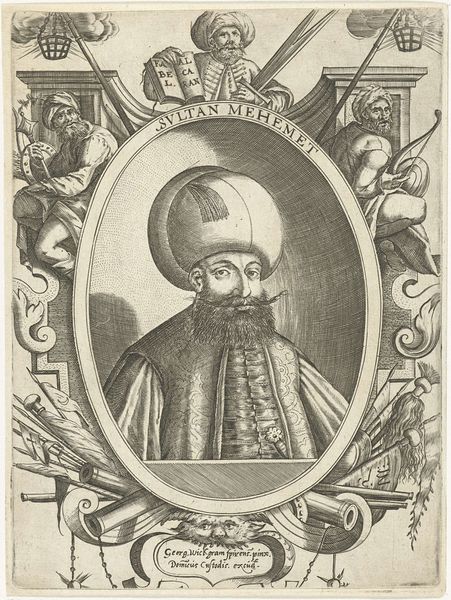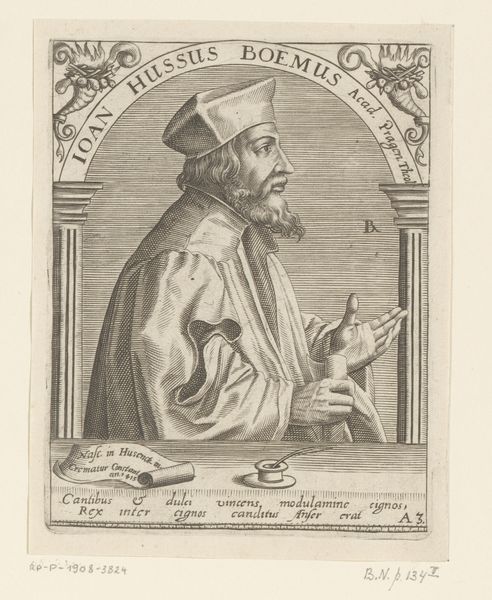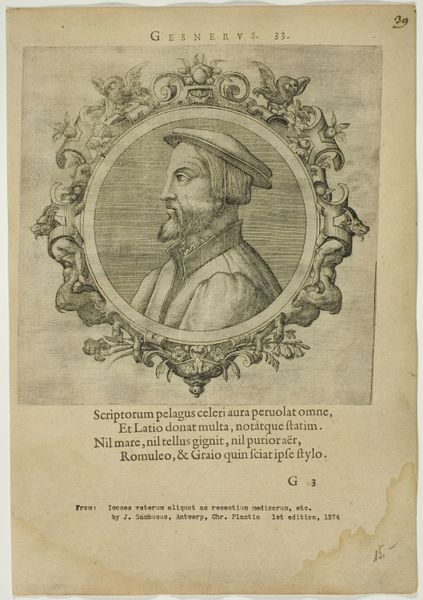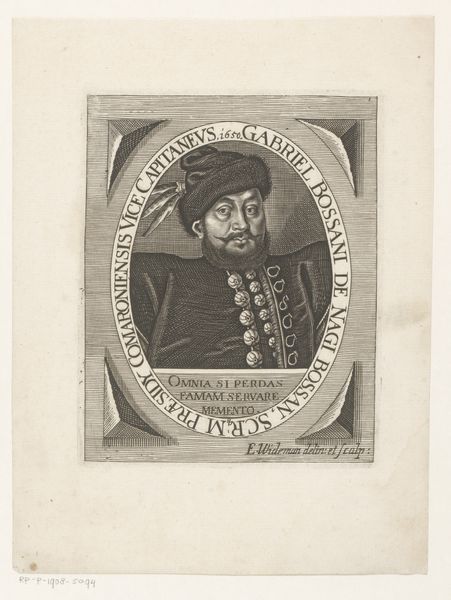
drawing, paper, ink, pen
#
portrait
#
drawing
#
figuration
#
paper
#
ink
#
pen-ink sketch
#
pen
#
history-painting
#
academic-art
Dimensions: height 199 mm, width 149 mm
Copyright: Rijks Museum: Open Domain
Curator: Here we have a drawing dating from between 1680 and 1702, titled "Portret van Johannes Calvijn" and attributed to Johann Michael Püchler. It’s rendered in pen and ink on paper. Editor: My initial reaction is one of quiet intensity. The precision of the lines, the almost architectural detail of his garments, gives it a powerful, austere feeling. Curator: It's interesting you note the architectural feel. Consider the immense labor involved, the meticulous application of ink. Notice how the portrait itself appears to be constructed of tiny lines of text. It elevates what would typically be considered mere portraiture into a significant feat of artisanal craft. Editor: Precisely! The lines of text create the impression of a symbolic architecture. It's not just a likeness; it’s as if Calvin is being built up, layer by layer, through the power of the written word. I see him, perhaps, as embodying a pillar of theological strength and doctrine. The gesture of his hand too seems significant, perhaps a blessing or a point of doctrinal significance. Curator: I'd say it represents the immense power of print culture at this time, the spread of ideas through pamphlets, books. And also how readily a commercial print industry was there to take the ideas, the theologies, of important minds and disseminate these widely. Editor: Absolutely. This image also incorporates intricate decorative elements that might not immediately strike one as useful or integral, but look at how it functions: that decorative border that functions as an oval gives the drawing the semblance of an emblem, underscoring its symbolic value. It draws upon iconographic traditions used across centuries. Curator: The ink itself provides clues; you've got gradations of light and dark within the work, this can hint at ink sourcing, and pigment stability that were emerging during the early commercialization of print-making and mass reproducibility. The tools here enable theological mass media to bloom as it did in 17th century Europe. Editor: I'm drawn to consider how it conveys a sense of lasting influence – it's a man defined not just by appearance, but also the very texts associated with him. Curator: For me, the power of the printing process speaks to the radical democratization of religious ideas taking hold during that era. Editor: It’s amazing how the smallest details – the materials and techniques – shape such differing and rich interpretations.
Comments
No comments
Be the first to comment and join the conversation on the ultimate creative platform.
